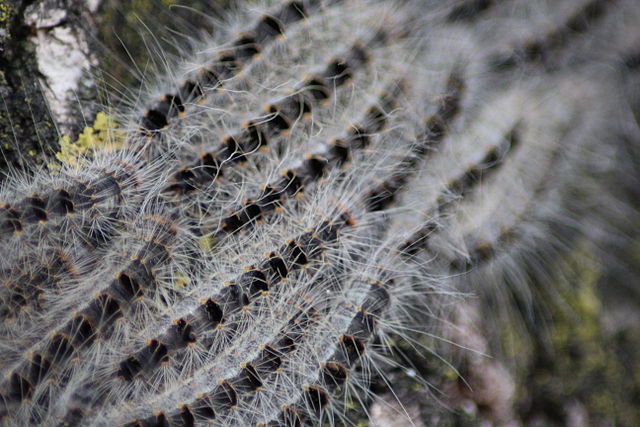Slowly but surely: the oak processionary caterpillar is back

Experts are seeing an increase in oak processionary caterpillar numbers in the Netherlands and have urged local councils to take action.
The tiny hairs of the caterpillar contain a protein which can cause itchy skin rashes and less frequently, eye and throat irritations and breathing difficulties in people and animals.
The numbers are not as high as in 2019, when the caterpillar colonised over half of the country’s oak trees. Of the 60,000 trees that have been monitored so far, some 6% were infested compared to 4.5% last year. That number is likely to go up, experts said.
Why the caterpillar is back in force this year is not clear, monitoring body EPR said. It may be that underground caterpillar nests have become active again.
Concentrations of caterpillars were found in Almere, Steenwijkerland, Ede and Nieuwegein. The reason may be that the caterpillars did not stray far to lay their eggs because of the rain.
“It may look like we are rid of the oak procession caterpillar but that is not the case,” the EPR said. “We will also have to remain on the alert for old nests in or under trees which may be filled with hairs.”
Local councils have tried to stop the progress of the caterpillars in different ways, from hoovering up or burning the nests to promoting the presence of birds which eat them and using insecticides.
In Nieuwegein, a trial is underway using a caterpillar lure and a special hoover.
The EPR wants to gather more national data and has called on volunteers, local councils and foresters to check at least 20 trees and report back on the size of the nests.
Thank you for donating to DutchNews.nl.
We could not provide the Dutch News service, and keep it free of charge, without the generous support of our readers. Your donations allow us to report on issues you tell us matter, and provide you with a summary of the most important Dutch news each day.
Make a donation